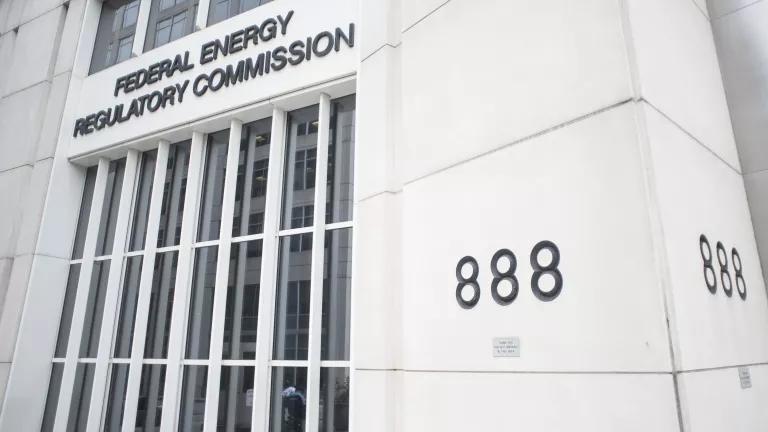That is the question policymakers should be asking when it comes to dealing with the disposal of toxic oil and gas wastes. Hydraulic fracturing or fracking for natural gas and oil has, in large part, both complicated and expanded the amount of waste that needs to be handled and disposed of with each well. And with the up-tick in oil and gas waste disposal needs – comes with it the not-so-brilliant, and oftentimes ill-conceived methods of disposal.
Let’s begin with a little history that my colleague, Amy Mall, covers in greater detail, regarding the little known fact that oil and gas waste was exempted from the law that governs safe disposal of hazardous waste back in 1988. The U.S. Environmental Protection Agency (EPA) ruled in 1988 that oil and gas wastes are exempt from the hazardous waste provisions – even if the waste is toxic – from the Resource Conservation and Recovery Act (RCRA). The EPA made this ruling despite the fact that the agency’s own analysis found oil and gas waste contained very high levels of toxic substances and had endangered human health. According to an EPA staffer, this decision was made “for solely political reasons.”
NRDC believes it’s time to reverse this Orwellian decision, and we have petitioned U.S.EPA to regulate the toxic wastes associated with the exploration, development and production of oil and gas under the hazardous waste provisions of the Resource Conservation and Recovery Act (RCRA).
Putting the history aside for a moment, hydraulic fracturing or fracking, a controversial process of blasting water, chemicals, and sand underground at high pressures to extract gas and oil, has again magnified management issues of oil and gas wastes for state and federal regulators. Fracking generates massive amounts of polluted wastewater that threatens our health if it is improperly disposed of and managed.
The byproduct of pumping lots of water and chemicals underground to extract gas and oil is that much of the chemical laced fluid returns to the surface along with the intended oil and gas. In addition to the chemicals, water, gas, and oil; harmful pollutants are also dislodged from geological formations and pulled to the surface of the well. These can include organic hydrocarbons, inorganic and organic additives, and naturally occurring radioactive materials (NORM) – all of which present degrees of risk if exposed to humans. (You can read more about fracking wastewater in a comprehensive NRDC report coauthored by an independent scientist from Carnegie Mellon University, In Fracking's Wake.)
In Illinois, a proposal by State Representative Brad Halbrook (R-Charleston) that would have allowed the Illinois Department of Natural Resources to issue permits to allow “oil field brine” to be spread across our roads and land as a deicer and/or dust suppressant was just defeated last week. Now, I’m sure oil brine – which was not defined anywhere in legislation and could easily consist of fracking waste from Illinois or elsewhere – may work as both a deicer and dust suppressant. However, it also increases exposure to harmful contaminants – such as cancer causing benzene – that are pulled to the surface with the brine. This brine can be “flowback” – hydraulic fracturing fluids that return to the surface after a hydraulic fracturing operation is complete – and/or “produced water” – water that is trapped underground in geologic formations and comes to the surface when oil and gas are produced. While the practice of oil brine spreading is currently illegal in Illinois and many other states, the unfortunate reality is Rep. Halbrook is not the first to come up with such a proposal. There are few states that allow for similar forms of the practice of spreading oil and gas wastewater (or oil brine) on the roads as a deicer, all with their own set of risks to human health and the environment.
Typically what happens (which I’m quite certain was the case in Illinois): a cash-strapped municipality is offered free oil and gas wastewater by the industry as a remedy for the ice on the roads in the winter and to stabilize dust and soil in the summer. This is not an altruistic act of kindness by the oil and gas industry. This arrangement transfers the burden of safe disposal of polluted wastewater to the public who must bear the burden with their health.
To be fair, Rep. Halbrook’s proposal was later amended to apply only to a single county in Illinois as a pilot project after he received heat for his proposal. Regardless, the county should focus on ensuring industry adequately manages their waste; not on dumping it for free on a public way. I testified to that effect in the House Environment Committee on Thursday, March 21, 2013, when Rep. Halbrook’s legislative proposal was voted down; with much help and leadership toward the defeat coming from the Governor’s office, IEPA, IDNR (who also testified in opposition), and the Illinois Attorney General’s office.
While there's no easy solution to the problem of toxic fracking waste, state regulators should be looking at ways to toughen standards for waste storage and disposal and putting an end to the loophole in federal law exempting drilling and fracking waste from being treated as hazardous – one of the many federal loopholes the oil and gas industry enjoys.


